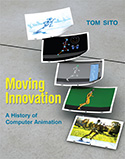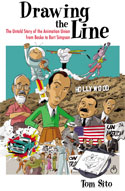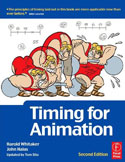Excerpt from Chapter 6, "The Great Disney Studio Strike of 1941":
Although more than two-thirds of the artistic staff signed representation cards, only half actually walked out on strike. The numbers are debatable, but, out of 1,293 employees, 600 artists and the rest clerical and support staff, perhaps 373 went out on strike. Walt Disney later claimed 293 walked and 427 went back to work. Disney head attorney Gunther Lessing made Walt believe it was even fewer, which may have influenced Walt's decision to tough it out. Gunny cockily assured Walt the strike wouldn't last 24 hours. Walt broke out a few bottles of Harvey's Bristol Cream and all toasted to a quick resolution.
While management celebrated inside, the employees approaching the Buena Vista gates had to make a choice they would remember the rest of their lives. Regardless of personal politics, this had all become the real thing. Should you go out and picket, risking unemployment and blacklisting during the Depression? Or cross the picket line, go in to work and earn the lasting hatred of your friends? The more artists who refused to work, the better the union's chances of shutting down production to force a compromise. But the more people who went in to work, the greater the chances that the studio would hold out until you and your family starved. Then, with your bank account empty you would slink back in and beg for your job back. This was the choice every Disney worker was now confronted with. Imagine walking through a shoving, seething mob that was yelling, "Scab! Commie! Don't Go In! Join the Line, Brother! Traitor! Fink!"
All the artists who became the Nine Old Men crossed the picket line and went back to work. Top animator Ward Kimball was very liberal and came from a family of union sympathizers. That morning when the picket went up, he and Fred Moore argued for 90 minutes over what to do. In the end they both crossed the line. Art Babbitt said that it must have been an agonizing decision for Ward to make. As Ward walked into the gate an assistant yelled at him:" Ward! Don't do it! The Strike will fail if you go in!" Kimball growled back: "If I don't go in Dumbo won't get made and the studio will fail!" Ward's best friend, animator Walt Kelly, did go out to picket. The two were never close again thereafter. Animator Bernie Wolf recalled his old friend, Bill Tytla, stopping him before he crossed and "called me every name in the book." Interestingly, recent histories refer to Tytla as politically apathetic to the Guild, but he didn't want to let his friends down. It's like there is the need to apologize for Bill's strong belief in the dignity of artists to speak for themselves. Experts point to reactions given by people like Tytla in their old age. But age cools the passions of youth, and many on both sides in the twilight of life expressed regrets for the passions of that summer.
Character design department supervisor Joe Grant had once been the best man at Bill Tytla's wedding. Now he was inside like the other supervisors anxiously watching their crews marching down the street. Joe recalled that whenever he needed to consult his story team about some point regarding Dumbo, Joe would walk out beyond the wall to the picket line where they were marching. As his people would walk around past him he would pull them out of the line to get their input. A local newspaper article of the time noted that all four of the Nisei artists went out on strike: Chris Ishii, Tom Okamoto, Masao Kawaguchi and James Tanaka. Political tensions between the U.S. and Japan were on the rise, so whether this newspiece was meant to demonstrate loyalty to American institutions or subversive behavior is open to conjecture. Hugo D'Arcy, the studio head of sanitation, went out on strike. He was actually a full-blooded Italian count. Assistant animator Hank Ketcham ( Dennis the Menace) was a striker, while his roommate, Dick Kinney, was for Walt because Kinney's brother, Jack, was a supervising director. Dick Kinney, in his old Mercury convertible, would drop Hank off a block from the studio and proceed through the jeering strikers' line while Hank would check in with the organizers and shoulder his sign.
Former Warner Bros. director Frank Tashlin had spent the last two years as a Disney story artist. When the strike broke out, he had just given his notice to manage a new animation unit forming at Screen Gems Pictures. "I'm management--but management, on the way to the studio, would stop by Disney and walk in the picket line and call Walt dirty names when he drove through in his Packard. Then I'd go to Screen Gems, down on Seward (Ave ). I hired the picketers and built a new studio out of them."
Along with the top-echelon artist/supervisors crossing the picket line in defiance of their friends were some bottom-echelon cel painters and polishers who in the end felt they couldn't afford to lose their jobs. Bill Melendez recalled, "We went out on strike to help those poor girls and now here they were crossing the line!"
At first the atmosphere on the picket line was jovial and irreverent, as cartoonists are by nature. All the animation artists from the other studios came to join their friends on the Disney picket line. Starting on June 5, every Wednesday the Warner Bros. animators, led by Chuck Jones, joined their brethren while dressed up as characters from the French Revolution and carrying on their shoulders a guillotine with an effigy of lawyer Lessing in the business position. Their picket signs read, "Liberte, Fraternite, Closed-Shoppite." The all sang a song to the melody of the French anthem le Marseillaise:
Come on you faithful sons of liberty,
We're here to give you, moral aid.
We will put the ax to Gunther Lessing,
And the mess of boners he's made.
Come on, you're doing swell!
The scabs can go to Hell!
March on, march on
There's sure to be,
A final victory!Another time, everyone dressed in black mourning and feigned crying. They were celebrating the death of the company union, the Federation. ." Chuck Jones and Friz Freleng came up with the idea of Warner Bros. picketers driving their cars slowly up and down both sides of Buena Vista Boulevard, creating a traffic jam to prevent scab artists from getting into the lot.
The strikers pitched a camp in the weed-grown field across the street, a field that a few years later would be the site of St. Joseph's Hospital. The chefs of the nearby Toluca Lake restaurants, when off duty, would cook meals at a makeshift soup kitchen for free. Animator Ed Friedman brought in cantaloupes from the farms of San Fernando, north of the city. The striking animators played poker, sandlot baseball and ping-pong to pass the time. Late at night, by a clump of trees called The Knoll, a sing-along started in front of a bonfire. Speeches were made by famous Hollywood celebrity activists like John Garfield and Frank Morgan (the Wizard of Oz). MGM animator Bill Littlejohn flew his small plane overhead and did victory rolls to the cheers of the picketers.
Dorothy Parker invited the wives of strikers to her cramped Hollywood flat for drinks to bolster their sagging morale. Bill Tytla's wife Adrienne wondered why a famous non-conformist writer like Parker would host a " hen-party" of house-bound, child-bearing middle class women. She herself may have wondered, since Adrienne recalled Mrs. Parker spent the evening drinking heavily and making quips like " Having no children, I grow fingernails."
_______________




